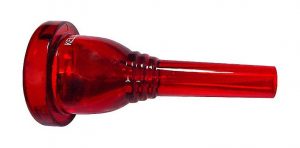With so many options available and such a wide range of price tags when picking out your next tuba mouthpiece, how do you go about choosing the best tuba mouthpiece for your needs?
This article will give you the low down on how to find the right option for you.
Imagine purchasing a Lamborghini coupe and fitting it with incorrectly-sized, discount tires. Suddenly a high-performance automobile is stymied by a set of lackluster treads making inefficient contact with the asphalt below the primo vehicle.
Why would anyone do this?
When purchasing a mouthpiece for a tuba, or any brass instrument for that matter, pricing should never be the driving consideration.
A mouthpiece’s shape, size, and construction materials impact the tone quality produced by the instrument.
Inasmuch, mouthpiece selection should always be in conversation with the musician’s needs and the characteristics of the instrument that will be yoked to the mouthpiece. The best tuba mouthpiece for high notes will not necessarily suit the needs of the marching band player.
Performance setting is also an important facet of mouthpiece selection as the marching band field and concert hall demand different results from the mouthpiece.
Advice guide to buying your best tuba mouthpiece:
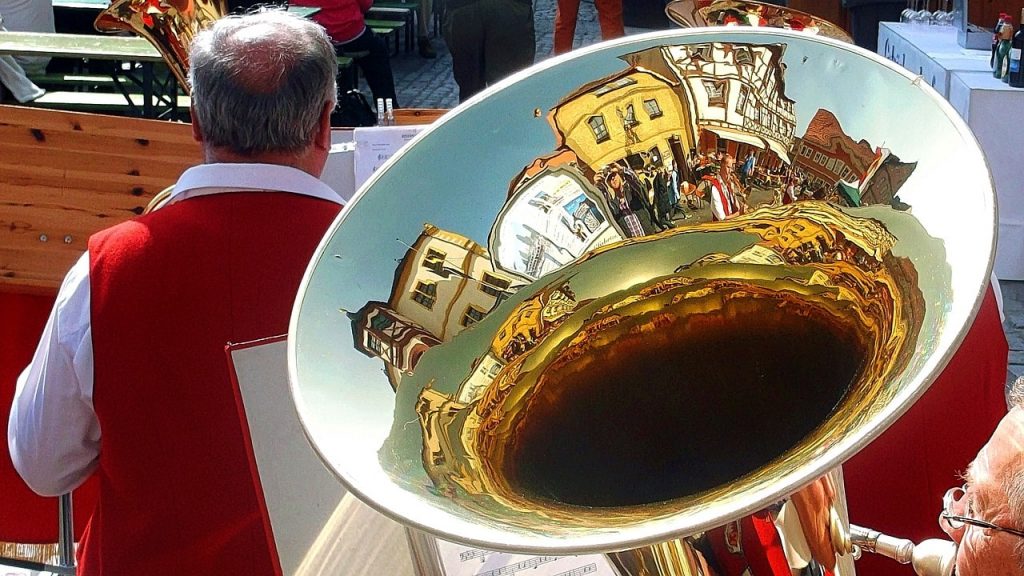
Buying a Tuba Mouthpiece is Easy Right?
Well, there’s a lot of things to consider before you purchase your tuba mouthpiece. There are different parts in a tuba mouthpiece and they all add to your experience when playing your tuba.
Read on to find out more about what to pay attention to when searching through options and finding the best tuba mouthpieces for you.
The quality of tone you can get out of each mouthpiece is often a personal preference. Best to try a selection of options to decide which one to buy.
How does the mouthpiece shape affect my choice?
In terms of cup shape and depth, most modern mouthpieces trace their roots back to the Bach 18 and the Conn Helleberg designs.
The Bach design is recognized by its wide, contoured rim, shallow, bowl-shaped cup, and relatively long shank reaching down toward the backend of the mouthpiece.
The Conn Helleberg designs feature a thin, sharp rim, and a deep, funnel-shaped cup that often shortens the shank length of the mouthpiece.
In terms of the advantages associated with these two standard shapes, bowl designs tend to be well-suited for passages containing rapid movement between notes, while funnel designs seem best suited for adagio-type passages that require long, mellow note production.
What size is the best size to go for?
Tuba mouthpiece size is usually best expressed with a number of measures instead of one all-encompassing metric.
Rim size, for example, relates to embouchure flexibility and endurance.
Generally, a wider rim affords the musician a more open embouchure and heightened endurance, while the narrow rim, and the resulting tighter embouchure, offers the musician more flexibility between notes.
Cup depth relates directly to sound characteristics.
A shallow-depth cup often means intensified flexibility and brilliance in the high register, while a deep cup allows richer and darker tone production in the lower register. One should not overlook the throat diameter of the mouthpiece either.
Finally, a note about backbore diameter.
Backbore diameter, when properly coupled with the other measurables listed above, can enhance the overall tone characteristics produced by the other features of the particular mouthpiece.
Construction Material
Mouthpieces are manufactured in a variety of materials.
A standard design calls for solid brass construction with silver-plating on the rim and cup of the mouthpiece.
Because many brass amalgams contain a substantial lead component, the silver plating protects the musician from the toxicity of the lead and also provides some germicide benefit.
For the cost, brass with silver plate creates crisp, clear sound at a good price. On the higher end of the cost continuum, gold-plate mouthpieces offer a tremendous combination of comfort, sound production, and ease of maintenance for the musician.
Given the soft finish of gold plating, a tubist’s embouchure is treated to a slightly more comfortable finish than the silver-plate options.
In terms of sound production, gold-plate mouthpieces tend to contribute to the production of a broader and darker sound than the silver-plate mouthpieces. On the downside, the gold models are significantly more expensive than mouthpieces crafted with other materials.
A word about plastic mouthpieces.
Lexan mouthpieces are currently in vogue as inexpensive alternatives to traditional mouthpieces. In marching bands especially, plastic mouthpieces are praised for offering musicians a variety of color options with durable construction.
Lauded for their rapid warmup ability and clear, expansive tone production, plastic mouthpieces are highly favored in high school and college settings.
However, professional musicians insist that Lexan-crafted mouthpieces significantly degrade tone quality and other sound characteristics, and should never be used in concert hall settings.
Mouthpiece Recommendations
With many options available where should you start?
Beginners:
For the beginning tubist, size is probably the most important mouthpiece consideration. While some sixth graders may have the lung capacity to produce suitable notes in all registers, they do not have the embouchure to do so.
The Blessing 18, Conn Helleberg 7B, and Miraphone TU21 are fine examples of mouthpieces that gently shape the embouchure while providing enough wind resistance to train the tubist’s airflow.
The Blessing 18 mouthpiece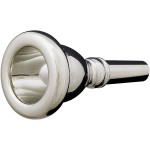
|
Conn Helleberg 7B mouthpiece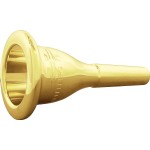
|
When pushed, many music educators will say that cone-shaped mouthpieces are better for novices than bowl designs. In general, plastic mouthpieces are not a suitable selection for the beginning tubist.
Advice for intermediate players:
With proficiency, the intermediate musician may select a larger mouthpiece with advanced construction and materials.
Given the bowl mouthpiece’s superior ability to move through a rapid progression of notes when compared to Helleberg/cone designs, an intermediate tubist would be wise to select a bowl-shaped model when purchasing a second mouthpiece.
If the budget allows, a gold-plated finish will compound the tonal quality of the bowl mouthpiece.
Excellent intermediate options include the Bach Megatone series, the Laskey 28G, and gold-plate numbers in the Perantucci 70 series.
Kellyberg plastic models (Kelly Mouthpieces) are good possibilities for the intermediate performer seeking maximum volume for the outdoor venue.
Vincent Megatone Tuba Mouthpiece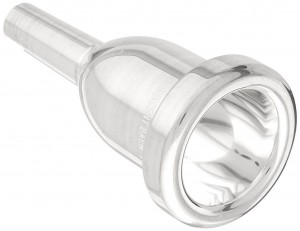
|
Kelly 25 mouthpiece
|
For the professional tubist:
Professional musicians tend to select their mouthpieces based on their performance contexts.
The orchestra instrumentalist, for example, will choose bowl mouthpieces because of their fluidity and precession when the score calls for a dynamic tuba contribution.
The professional playing a horn in an outdoor context – i.e. drum cops performer – will often seek a mouthpiece with a deep bowl because of volume considerations.
Top 7 Best Tuba Mouthpiece Reviews 2026
DN Tuba Bass Horn Mouthpiece Silver Plated
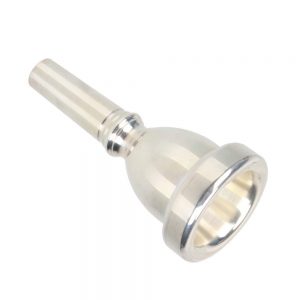
Click Here for Pricing, Pictures and Reviews on Amazon.com
Review: this affordable tuba mouthpiece is the best tuba mouthpiece for beginner players.
Pros:
- Good tone
- Cheaper option
Cons:
- Not a well-known manufacturer
Great mouthpiece for: somebody searching on a budget.
Glory Standard Tuba Mouthpiece Silver Plated 22
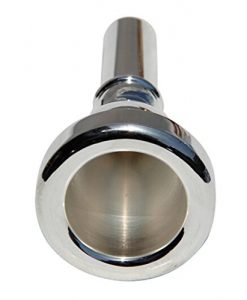
Click Here for Pricing, Pictures and Reviews on Amazon.com
Review: this affordable mouthpiece offers a comfortable blow with a quality tone.
Pros:
- Suits all abilities
- Affordable
- Great tone
Cons:
- Easily discoloured, tarnished or bashed
Great mouthpiece for: any player on a budget.
Adam ATU18 Adam Mouthpiece Tuba 18
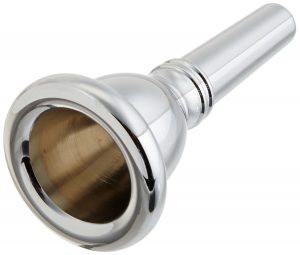
Click Here for Pricing, Pictures and Reviews on Amazon.com
Review: this mid-priced mouthpiece offers a smooth edge for comfort.
Pros:
- Popular
- Mid-priced
- Comfortable to play
Cons:
- More expensive than many other options
Great mouthpiece for: an intermediate player looking to move forward with their playing.
Yamaha YACBB67C4 Tuba Mouthpiece
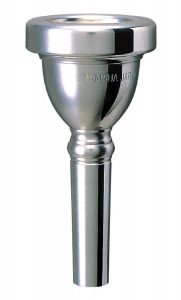
Click Here for Pricing, Pictures and Reviews on Amazon.com
Review: a well-priced mid-range option for the intermediate tubist.
Pros:
- Well-priced
- Intermediate mouthpiece
Cons:
- Would need upgrading with experience
Great mouthpiece for: intermediate players.
24K Gold Helleberg Tuba Mouthpiece
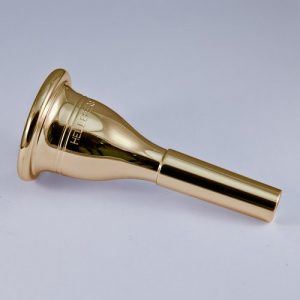
Click Here for Pricing, Pictures and Reviews on Amazon.com
Review: this mouthpiece is the best tuba mouthpiece for marching band.
Pros:
- Popular option
- Professional
Cons:
- Expensive
Great mouthpiece for: the professional marching band player with money to spend.
Denis Wick DW3186-3L Heritage Tuba Mouthpiece
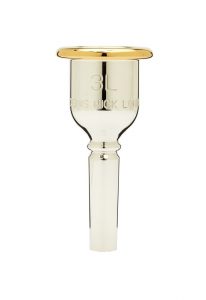
Click Here for Pricing, Pictures and Reviews on Amazon.com
Review: this deep-cupped mouthpiece offers a professional player exceptional tone quality.
Pros:
- Exceptional tone quality
- Great craftmanship
- Respectable manufacturer
Cons:
- Expensive
Great mouthpiece for: professional players looking for that high class note-hitting mouthpiece.
Conn-Selmer Helleberg 120 Standard Tuba Mouthpiece
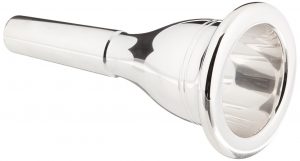
Click Here for Pricing, Pictures and Reviews on Amazon.com
Review: this high-end option is expensive but offers the comfort and tonal quality that reflects the price tag.
Pros:
- Great volume
- Interesting tone
- Great control for dynamics
Cons:
- Expensive
Great mouthpiece for: a professional looking for luxury in their mouth piece.
A Final Note
Over time, most professionals amass six or more mouthpiece options giving them a treasure-trove to choose from when considering performance settings and literature demands.
Top professional models include the Bach Dynatone Gold, Gidding and Webster’s Dynamo series, the Marcinkiewicz Pro-Line, and for outdoor use, the Marcinkiewicz N6W.
In reality, mouthpiece selection is as important as instrument selection.
A huge instrument with a skimpy mouthpiece is counterproductive coupling. Similarly, a hefty, gold-plate, deep bowl mouthpiece fitted on a dinged 3/4 instrument will frustrate the beginner band student.
So how do you choose?
What to do?
Get to know your performance context, your playing style, and your instrument’s tonal characteristics before handing a cashier hundreds of dollars for the “sexy” mouthpiece on a 30% off sale.
Make the impending marriage of instrument, musician, and mouthpiece work by planning, asking questions, and taking time to complete a deliberate selection process.
Happy Playing!
